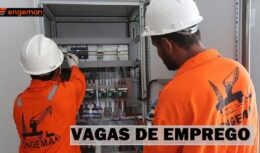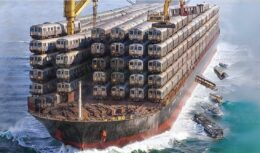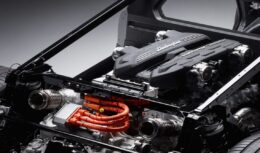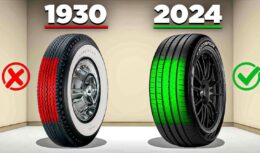
Companies develop, with funding from the investment obligation clause in R&D,I, a new Gimbal Joint Riser solution, which begins its testing phase at UFRJ
Subsea 7, Equinor and Repsol Sinopec Brasil are developing the Gimbal Joint Riser Project (GJR) with financing from the R&D investment obligation clause, regulated and supervised by the National Agency of Petroleum, Gas and Biofuels (ANP). The project has clear and essential objectives for the market, namely to improve costs, expand the safety of subsea operations of the energy industry and mitigate carbon emissions in the pre-salt layer, eliminating components necessary for Steel Lazy Wave Risers (SLWRs).
Equinor, Repsol Sinopec and Subsea 7 project aims to absorb dynamic platform movements
In this new stage, the project focused on pre-salt moves on to carry out tests at the Waves and Currents Laboratory (LOC) and at the Oceanic Technology Laboratory (LabOceano), both at UFRJ. The second has one of the largest ocean tanks in the world, with 23 million liters of water and a height similar to an eight-story building.
The laboratories function to simulate the marine environment and the phenomena that occur at more than 2 meters in the pre-salt layer. Equinor, Subsea 7 and Repsol Sinopec's project is based on the insertion of a multi-articulated joint in a suspended catenary. In other words, the objective is to insert an articulated element in a rigid riser so that the dynamic movements generated by the platform are absorbed.
This device makes it possible to expand the flexibility of the riser, making it possible to use free catenary risers instead of SLWRs in extreme environments. According to the studies so far, linked to a typical pre-salt project, for example, indicate a relevant saving of approximately 35 to 40% per riser, due to the reduction in the use of at least 850 meters of piping, however this may vary from project to project.
GJR solves several obstacles in the sector
Equinor, Repsol Sinopec and Subsea 7's GJR proved to be efficient in solving an industry problem, Stress Corrosion Cracking, by means of a flexible element free of tensile loads and not susceptible to corrosion.
The external armor does not come into contact with the fluid, preventing corrosion under traction and contact with CO2. The layout does not use buoys and is the same size as a common pipe, adapting to normal offshore welding procedures. According to the Vice President of Subsea 7 in Brazil, Daniel Hiller, the company is pleased to develop this technology alongside Repsol Sinopec and Equinor, with the support of the ANP.
This technology demonstrates that it is yet another example of innovation in products and systems for ultra-deep water risers, a know-how in the DNA of Subsea 7 in Brazil, always focusing on efficiency and reliability.
Project is essential for the oil and gas market
According to Alexandre Diezel, project manager at Repsol Sinopec Brazil, the GJR is an innovative concept developed in Brazil and very important for the national scenario of oil and gas production. When developed, the technology will be a reliable and robust solution, helping the national industry to remain competitive in the long term.
As for the RD&I Manager at Equinor Brasil, Andrea Achoa, the company has a strong focus on the development of subsea technologies that contribute to the safety of operations and the reduction of emissions.
The GJR project fulfills all these objectives, considering that it seeks to make the configuration of a rigid riser in free catenary viable.












Army summons Brazilians with up to…
Come be a watermelon, you too
Air Force F-16 fighters…
Which genocide are you talking about? Than…
Air Force F-16 fighters…
Everything is fine, 100-year secrecy,…
Air Force F-16 fighters…
Well... It's flying scrap... Typical...
Brazil begins an ambitious journey…
Very poor project with the final station…
It's a big step forward, I can't deny it!…
Looking forward to starting
The responsibility of a commander of any…
Hello, my name is William, I would like to participate…
The matter is made announced the price…
I love
Excellent innovation that will heat up the competition.
According to data shared by Portal Solar, the…